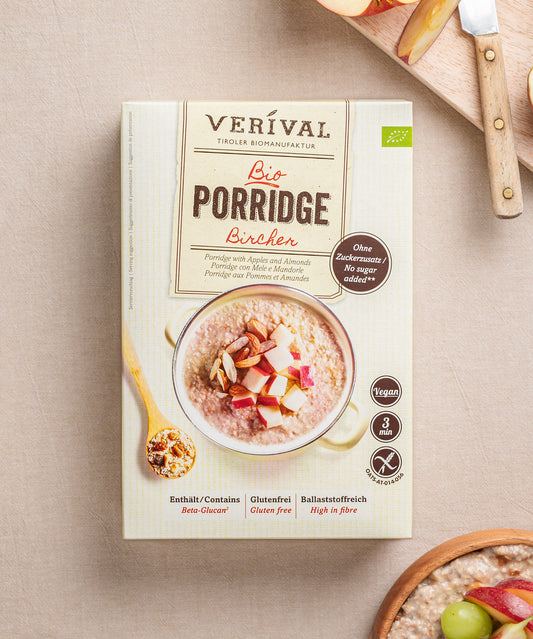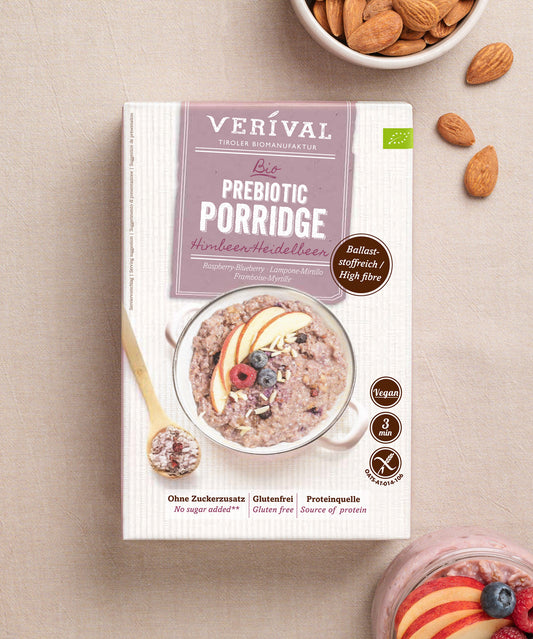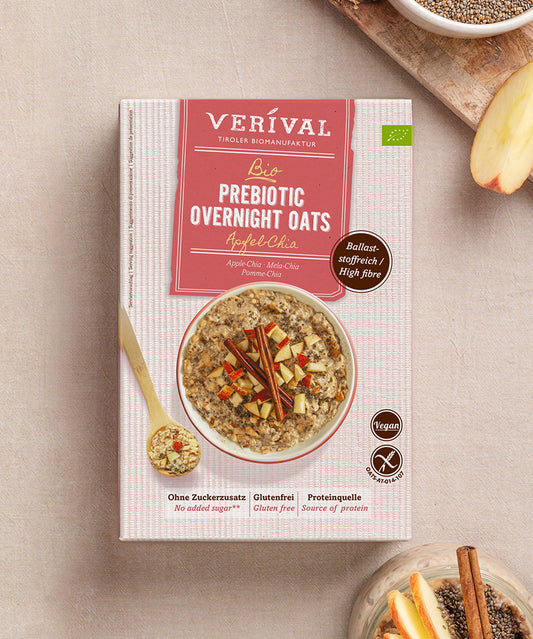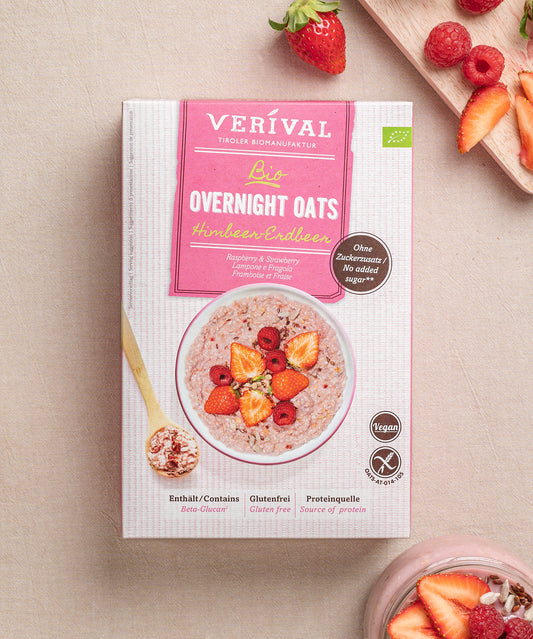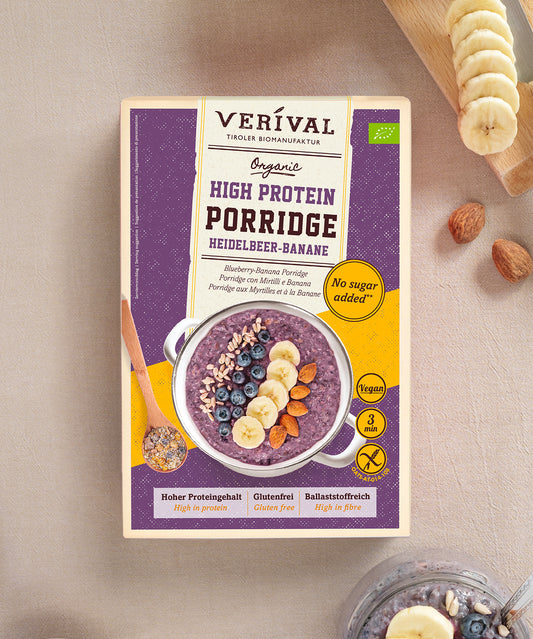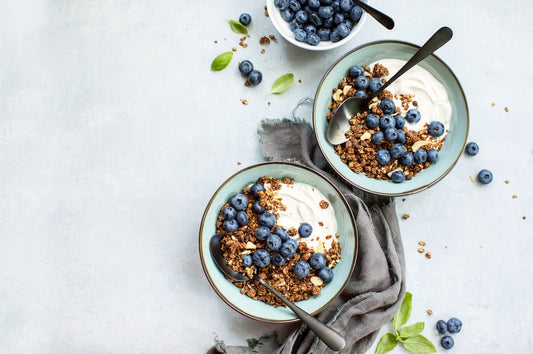We are introducing you to the 5:2 intermittent fasting diet here. It is simple and not too strict. You fast two days a week, but you are allowed to eat small amounts.
Intermittent fasting is a hot topic. It is said to be healthy and to “renew” the body. There are different forms of intermittent fasting.
Many people eat nothing for 16 hours a day and use the 8-hour window to eat. Others go without solid food two days a week.
With this form of nutrition, also known as “fast diet”, you can lose weight quickly and maintain your weight afterwards. Find out exactly what the 5:2 diet is and how you should eat during it.
Interval fasting – all methods and information
What is the 5:2 diet?
The 5:2 diet is a type of intermittent fasting and was “invented” by Dr. Michael Mosley. His motivation was to create a form of dieting that could be easily integrated into everyday life, was healthy and did not involve too much restriction as other forms of fasting, such as therapeutic fasting. He achieved this with the 5:2 diet.
This is considered to be particularly suitable for everyday life and flexible, as it does not involve daily fasting and there are no specific time slots to adhere to. Instead, you eat “normally” five days a week and fast for two days. It doesn't matter when you fit these days into your weekly schedule. It's best to adapt the fasting days and your eating plan to your individual needs.
A strong calorie deficit is enforced during the two fasting days. Women should not consume more than 500 calories and men no more than 600 calories. On the remaining days, the normal energy requirement of about 2000 calories is covered.
This method of fasting is designed to boost and regulate the metabolism, leading to long-term weight loss. The alternating fasting and eating phases prevent the yo-yo effect.
How does the 5:2 intermittent fasting method or “The Fast Diet” work?
The 5:2 intermittent fasting method is quite simple: you eat normally five days a week and fast for two days. The two fasting days should not follow each other and should not alternate weekly. Instead, you should choose two fixed days on which you can fast regularly and without stress. It's best to choose two weekdays and not the weekend. At the weekend, you often meet up with friends or family, are invited to various events or do sports. Therefore, these days are rather unsuitable for fasting.
It's important to know that “fasting” here does not mean “starving”. You should consume a small amount of calories (500 for women and 600 for men), especially in the form of vegetables and proteins. This helps to prevent muscle breakdown. Important to know: “fasting” here does not mean “starving”. You should consume a small amount of calories (500 for women and 600 for men), especially in the form of vegetables (such as broccoli) and proteins. This counteracts the breakdown of muscle tissue and the drop in basal metabolic rate, and, unlike sugary, carbohydrate-heavy or fatty foods, it keeps you feeling full for longer. It also gives you the energy you need for the day.
In the five days when you are allowed to eat, there are theoretically no restrictions, so you don't necessarily have to eat low carb. However, you should definitely eat a healthy diet, as this will help you lose weight.
What should I eat during 5:2 intermittent fasting?
On non-fasting days, you can eat a normal diet during 5:2 intermittent fasting. However, you should stick to a balanced diet with lots of fruits, vegetables, proteins and healthy carbohydrates.
Those who indulge after a fasting day often consume too many calories. You need about 1,500 to 2,000 calories per day. If you do sports, you need a little more.
What can you eat on a fasting day?
On fasting days, you should consume a maximum of 500 calories if you are a woman and 600 calories if you are a man.
A healthy breakfast is the basis for a lively metabolism. Light muesli with low-fat quark or yoghurt is ideal. Eat some fresh fruit with it. Depending on how hungry you are, you can then either have lunch or dinner.
Low-calorie and protein-rich foods are allowed, such as lean meat, tofu or eggs with vegetables or an omelette. There are only a few carbohydrates. Potatoes or oat flakes are good. Drinking a lot is a must because it stimulates the metabolism. A little black coffee without sugar is also allowed.
What are the advantages of the 5:2 diet?
One advantage of the 5:2 intermittent fasting is that it is practical to integrate into your daily routine. Unlike the 16:8 method, you don't have to fast every day.
In addition, you lose weight consistently with 5:2 intermittent fasting. As a rule, those who fast lose about half a kilogram per week.
The dreaded yo-yo effect usually does not occur with this diet, and cravings are also fought. Like any other intermittent fasting, the 5:2 diet also has some health benefits:
- Blood pressure lowering
- Body fat reducing
- Stabilized blood sugar levels
- Helps prevent cardiovascular disease
- Prolongs life in the long term 1
It is also being discussed whether intermittent fasting cleanses the cells. This means it can prevent cancer or help with treatment. 2
What are the disadvantages of the 5:2 diet?
Like every diet, the 5:2 diet also has some disadvantages that should be considered. For one thing, at the beginning of the fasting period, you may experience tiredness, headaches or dizziness. After all, the body is expected to cope with a severe calorie deficit, and it needs time to adjust.
On the other hand, the diet is not always successful. However, this has nothing to do with the form of the diet itself, but with the wrong approach. Many people think that they can indulge themselves and eat unhealthy food without limit during the five days when they are not fasting.
Of course, this is theoretically possible, but it is not how you will lose the desired number of kilograms. A third disadvantage is that some people forget that long-term weight loss also requires exercise and enough sleep.
Losing weight with 5:2 – getting slim with intermittent fasting
The Fast Diet was popularized by British journalist Dr. Michael Mosley. He was named Medical Journalist of the Year by the British Medical Association as early as 1995.
Over the years, he has hosted numerous award-winning television programs. The doctor was then diagnosed with type 2 diabetes in 2013.
He wanted to avoid this and lose weight healthily. So he lost nine kilos with the Fast Diet and documented his journey. It was only through him that the scientific community became aware of the method.
The 5:2 intermittent fasting method is not a permanent way of life. It is intended as a diet and works as such. You can lose between two and four kilos per month.
Intermittent fasting methods – find out more
What are the possible risks and disadvantages of this fast diet?
Your blood sugar will be low on the fasting days, and often your blood pressure will be too. This can lead to:
- lack of concentration
- tiredness
- dizziness
- headaches
In addition, you may be consuming too few nutrients. However, this only happens if you are not paying enough attention to a healthy lifestyle. On non-fasting days, you should really eat enough.
Who is the Fast Diet suitable for?
The 5:2 intermittent fasting is suitable for healthy people with a normal BMI or who are overweight. So first of all, you should consult the BMI calculator.
If you have high blood pressure or diabetes, you should seek additional advice from your doctor before starting the diet.
Intermittent fasting is not suitable for people:
- with metabolic diseases
- with an eating disorder
- who are pregnant or breastfeeding
- who have low blood pressure
- who are prone to migraines.
How long should you eat for after the Fast Diet or the 5:2 method?
You should practice 5:2 intermittent fasting for as long as you want to lose weight. After that, you can switch to 6:1 intermittent fasting or 16:8 intermittent fasting. Learn more about all intermittent fasting methods and exactly what intermittent fasting is.
Tips for the 5:2 diet
- Set two fixed days on which you want to fast and stick to them.
- Choose the fasting days so that you can keep to them – preferably during the week and not at the weekend.
- Try to avoid these 10 common mistakes when intermittent fasting.
- Integrate regular exercise – but be careful! On the fasting days, only do light sports such as yoga or going for a walk.
- Drink enough
- Don't overdo it during the eating phases, but enjoy everything in moderation! There is no point in fasting for 2 days and then eating pizza, pasta and the like on the other days.
- Always keep an eye on your calorie needs, not just on the fasting days.
An example of a fasting day using the 5:2 method with healthy recipes
Finally, we will show you what a fasting day might look like. We have also linked some 5:2 interval fasting recipe ideas.
For breakfast, for example, you can treat yourself to a low-fat VERIVAL porridge topped with fresh berries.
At lunchtime, Bircher pancakes are on the menu. They contain 250 g low-fat quark and egg, so they are high in protein and low in calories. The dough is refined with VERIVAL Bircher Porridge, and served with yoghurt or fruit puree.
If you stick to a small portion, you can have another snack in the afternoon. Small muesli bites, which contain oats, granola and, above all, banana, provide energy for the rest of the day. These are also ideal as a snack between meals on eating days.
Drink plenty of water or unsweetened tea throughout the day. In the evening you can have a warm vegetable or miso broth.
It's better not to work out on your rest days, but you can do a little yoga or go for a walk. And the next day, everything will be back to normal!
You can basically use the same recipes on your eating days. However, you should make sure you consume enough calories and eat at least three balanced meals a day.
For breakfast, you can make yourself a delicious Verival Sport porridge. This provides you with 30% of your daily protein requirement and already covers 23% of your vitamin requirement. It is also purely plant-based, contains no artificial sweeteners and – most importantly – tastes delicious.
Vegan chia seed pancakes are perfect for lunch. They keep you full for a long time, are healthy and taste absolutely delicious. Topping them with a few berries will turn this meal into a real taste sensation.
Dinner should be light and healthy. How about stuffed peppers with Verival Broccoli Porridge, for example? This meal is not only very quick to prepare but also full of important nutrients!
Buy low-calorie breakfast from VERIVAL now
FAQ – 5:2 fasting, all questions and answers:
How long can you fast for 5 2?
With the 5:2 method, you eat normally for 5 days and fast for 2 days. Unlike other forms of fasting, the 5:2 is to be regarded as a diet. Therefore, it is not suitable for a long-term change in diet or lifestyle. However, you can use this method for a few months or until you reach your weight loss goal.
What are the benefits of the 5:2 diet?
The 5:2 diet is flexible to use because you only fast two days a week and these do not have to be consecutive. This means that the fasting days can be adapted to your individual daily or weekly routine. In addition, you can achieve your weight loss goal in just a few months and there is no risk of a yo-yo effect. The diet is also said to be good for reducing body fat and preventing high blood pressure.
What can you eat on a fasting day?
On fasting days, it is important to achieve a significant calorie deficit. Women should not consume more than 500 calories, while men should not exceed 600 calories. Therefore, it is recommended to eat protein- and fiber-rich foods on fasting days. These keep you full longer and prevent unwanted muscle loss. You can drink calorie-free or low-calorie drinks such as unsweetened tea and coffee, as well as water.
What are the benefits of fasting for two days?
The 2-day fast and 5-day eat diet is a popular diet that is easy to integrate into your daily routine and leads to weight loss. There is no risk of yo-yo dieting either. This method is also said to lower blood pressure, reduce body fat and minimize the risk of diabetes. This type of fasting is also said to have a positive effect on the intestines.
Can anyone do the 5:2 diet?
In theory, anyone can do the 5:2 diet. However, the first step is to find out whether you need this diet at all. After all, only people in the BMI classes “normal weight” and “overweight” should do the 5 to 2 diet. To find out whether you belong to one of these classes, it is advisable to use a BMI calculator. It is not recommended for people who suffer from low blood pressure, an eating disorder or metabolic disease, are breastfeeding or pregnant.
How much can I lose with the 5:2 diet?
As with all diets, weight loss with the 5:2 diet is very individual. According to studies, you can lose about half a kilogram per week with the 5:2 diet. However, this is only an average and depends heavily on your starting weight, level of activity and the foods you eat during the eating phase.
- Stekovic S, Hofer SJ, Tripolt N, et al. Alternate Day Fasting Improves Physiological and Molecular Markers of Aging in Healthy, Non-obese Humans. Cell Metabolism . Published online September 2019:462-476.e6. doi: 10.1016/j.cmet.2019.07.016
- Nencioni A, Caffa I, Cortellino S, Longo VD. Fasting and cancer: molecular mechanisms and clinical application. Nat Rev Cancer . Published online October 16, 2018:707-719. doi: 10.1038/s41568-018-0061-0



